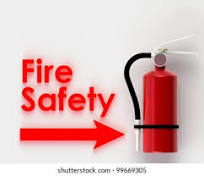There have been some significant changes to fire safety, through the Fire Safety Act 2021 which came into force on 16th May 2022.
However, these changes will only apply to organisations that own, run, manage or are otherwise responsible for multiple dwelling residential buildings. We do know, however, some of our clients are in that position.
The original fire safety legislation, or Fire Safety Order, was put into law in 2005, and was primarily designed for non-domestic buildings. However, it did include residential facilities, where they had multiple dwellings, or other premises such as hotels and care homes. But in these cases, responsibility for the areas outside of those dwellings was unclear, or at least open to interpretation.
So, as a result of Grenfell, and an increasing awareness about the risks of fire safety using some of the modern insulating materials, legislation has been passed to bring multiple dwelling, residential properties much more in line.
While it was clear that “Responsible Persons” had responsibility for common areas as well as the individual dwellings themselves, there was a lack of clarity in the law over how to treat the exterior of multi-occupancy dwellings. Particularly cladding, balconies and fire escapes.
This new legislation makes it clear who is responsible for these areas, and what responsibility they have, putting beyond doubt “that structure, external walls and flat entrance doors fall within the scope of the Fire Safety Order”.
Action Points
Organisations and Responsible Persons need to do the following:
- Decide whether the new Fire Safety Act applies to premises they are responsible for;
- Review current risk assessments for affected premises to ensure they reflect the changes and “Best Practice”;
- Train those undertaking fire risk assessments, making them aware of the new guidance;
- Ensure they are competent to apply such guidance;
- After carrying out fire risk assessments, make sure all recommendations are reviewed;
- That action is taken to reduce fire risks;
The enforcing authorities will be publishing “Best Practice” guidance. They will expect organisations to have followed it, or to have taken actions that demonstrate they understand the guidance and are complying with it.
Fire is a serious hazard that all organisations must consider within their Workplace Risk Assessments. This is why we always recommend that clients appoint an external fire safety expert to undertake fire risk assessments, as there are many technical, building and workplace considerations to include when assessing fire risks. It is highly unlikely that clients will already employ someone in house with sufficient fire safety knowledge and competence.
As the Law continues, quite rightly, to tighten up on fire safety for both workers and residents, this is another reason for using external professional expertise, who typically are former or retired fire brigade officers.
Our Consultants would be pleased to advise you on any element of the issues arising from this newsletter.


